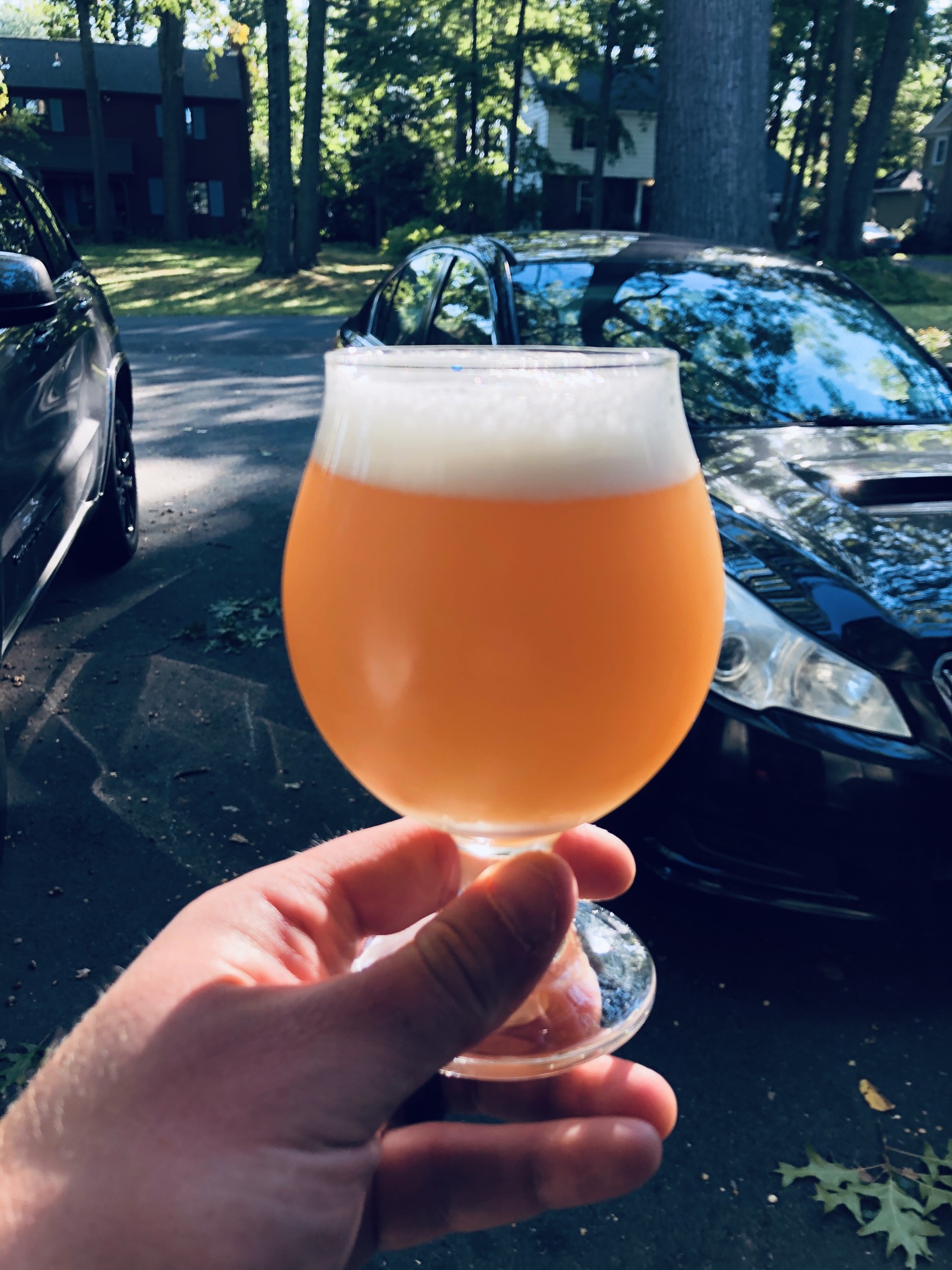couchsending
Well-Known Member
- Joined
- Jun 21, 2016
- Messages
- 3,063
- Reaction score
- 2,256
question on aroma. I have been brewing this beer for awhile. Always turns out great. However I always feel the aroma is lacking. Maybe because I ve been drinking alot of King Sue lately at that aroma is off the charts. It smells like you just opened a huge bag of fresh Citra hops. I do closed transfer. Oxygen ingress is minimal. My beers stay perfectly color and flavor for months so its not oxidation. I do a single dry hop per his original suggestion and i do it like day 3. That dry hop sits in the Spike Conical for like 8 days after i drop it in . My theories to improve aroma are the following
1. Split the single dry hop (6 oz of C,M,G) into two 3 oz additions hoping the later DH will give me more aroma
2. Not DH so early and wait till 2 or 3 days before kegging to add DH to fermenter
3. Ferment under pressure to keep the aroma in. Ive read that pressure fermentation affects the taste of NEIPAs esp ester formation.
4. Add a keg hop to this recipe. This will put fresh hops in the keg and should boost aroma. But worried about vegetal flavor
any suggestion from you guys would be appreciated!
The reason you’re not getting the aroma is you’re adding dry hops too early into fermentation, plain and simple. You can split the hops if you want but I don’t think it’s necessary. I don’t think TG is adding dry hops during fermentation at all. You can tell it’s Citra with KS and PS. When you get pure expression of the hop and not muddled fruit that means the dry hops were added after fermentation.
Don’t ferment under pressure. Some yeasts can handle it, others can’t. If you think you want to try it I wouldn’t go over 7psi which means you’d need a spunding valve. It’s not necessary and you run the risk of a poor fermentation.
I’d add more than 6oz, especially if you have a conical fermenter and can dump hops. Try closer to 9oz.
If you have a spike conical and you want explosive aroma from your dry hops do this:
Wait until fermentation is complete and beer is negative for VDKs (do a forced diacetyl rest, it’s easy).
if you have the pressure transfer manifold add it when you see active fermentation is winding down but still getting some Co2 release. You don’t want pressure to build up very much in my opinion. Keep it below 5psI.
Cool to 60*
Wait for 24-36 hours for yeast to flocc.
Harvest yeast (save for future batches)
Hook up Co2 to the manifold at 5-10psi and turn on Co2. Open the top 4” TC port and dump hops in while you’re pumping Co2 into the headspace. Put the 4” TC back on loosely but let Co2 escape for 30 seconds then close it up. You can purge headspace a few more times using the manifold.
Leave at 60 for 48 hours. At that time take a sample and double check for hop creep and/or diacetyl and start dumpling settled hops. If negative for diacetyl start cooling to 39. I go 5* in the AM and 5* at night so as not to shock the yeast. You can continue to dump hops or just wait until you get to 39. Leave at 39 for a couple days then keg.
Explain your exact process for purging the keg and and transferring the beer. Just cause you don’t get a color change doesn’t mean you don’t get aroma damaging o2 pickup. In my experience Aroma is the first to go.
Last edited:







































![Craft A Brew - Safale S-04 Dry Yeast - Fermentis - English Ale Dry Yeast - For English and American Ales and Hard Apple Ciders - Ingredients for Home Brewing - Beer Making Supplies - [1 Pack]](https://m.media-amazon.com/images/I/41fVGNh6JfL._SL500_.jpg)




















